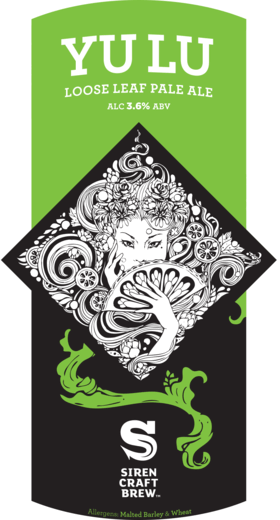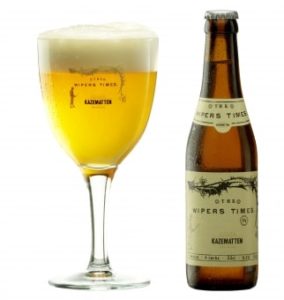
Beau’s St Luke’s Verace Gruit Ale
The craft beer biz is constantly evolving and the return of Botanical Beers is just another example of the industry’s thirst for new (and even ancient) directions
Here’s the deal…
Maybe it’s because of hop overkill that some craft brewers around the world are returning to and embracing the lost art of brewing beer with botanicals, a practice which was commonplace pre 16th Century not just in the Netherlands but all over the world.
And although it might be hard to imagine a time when hops weren’t beer’s focus point, it was once a reality. And to understand botanical brewing it helps to look back.
As Lowlander Brewing explains “early beers were in fact terribly sweet due to the barley and a lack of bittering ingredient. So brewers began to experiment using new ingredients to counter the malt’s sweetness.”
Botanicals like flowers, herbs and roots (which were often ground into a mixture commonly known as Gruit…hence the name) “were found to lend themselves to a more balanced beverage and ‘botanically brewed beer’ was born.”
While American brewers do delve into botanical beer variations on occasion (primarily the Gruit style), craft beers brewed with botanicals are returning in England (Wales in particular) as well as in Europe (particularily in Scandinavian countries).
And here are some Botanical Beers (some with hops others not) that matter…
Siren Craft Brew Yu Lu Loose Leaf Pale Ale
 Named the best brewery in England by RateBeer in 2015, Siren Craft Brew has built its considerable reputation going unexpected places.
Named the best brewery in England by RateBeer in 2015, Siren Craft Brew has built its considerable reputation going unexpected places.
Siren’s Yu Lu is a 3.6% ‘Tea Ale’ that mixes Earl Grey leaves with an über-light hop menu and succeeds wildly.
Tomos a Lilford, Rosemary Ale
With ales featuring yerba mate, rose petals and even seaweed a common part of this Welsh brewery’s repertoire Tomos a Lilford Rosemary has a lemony urgency reminiscent of hops.
Using only locally sourced wild rosemary, this revelatory ale offers a paradigm-shifting take on herbal brewing.
HaandBryggereit, Norwegian Wood
HaandBryggereit (which translates from Norwegian as the Hand Brewery) is basically four guys working on an incredibly small scale in a 200-year-old small wooden building in Norway that was originally built as horse stables.
Tapping into Scandinavia’s history of brewing with native juniper berries and fire-kilned malt, Norwegian Wood is a 6.5% Smoked Ale spiced with juniper twigs and berries.
Stone Angel Medieval Ale
Conceived by the UK’s Medieval Bread and Ale Company and actually brewed at Wiltshire’s Kettlesmith brewery this mediaeval ale is true to the Gruit style that was brewed for over a thousand years in homes, monasteries and breweries using a wide range of herbs and spices, and closely guarded recipes passed from generation to generation
Stone Angel Medieval Ale recaptures the distinctive tastes and aromas of this rich and skillful brewing tradition in commanding manner.
 Brouwerij de Kazematten, The Wipers Times 14
Brouwerij de Kazematten, The Wipers Times 14
Belgium’s Brouwerij de Kazematten brews a famous herbal ale that was named after a ‘trench gazette’ produced on a salvaged printing press from the ruins of Ypres that was read by British soldiers in foxholes who deliberately mispronounced the name of the city as ‘Wipers.’ Which only partially explains the beer’s unusual name.
Brewed with local ‘blessed thistle’ that was depicted in the wartime newspaper’s masthead, The Wipers Times 14 is a 6.2% Belgian Blonde Ale crafted with local grains, hand-picked local herbs and only local hops. And in an act of true beer geekery the 14 was added to indicate the beer’s gravity (14 Plato).
Huge H/T to the UK Independent for their help with this post as well as to Lowlander Beer
 American Craft Beer The Best Craft Beer, Breweries, Bars, Brewpubs, Beer Stores, And Restaurants Serving Serious Beer.
American Craft Beer The Best Craft Beer, Breweries, Bars, Brewpubs, Beer Stores, And Restaurants Serving Serious Beer.
